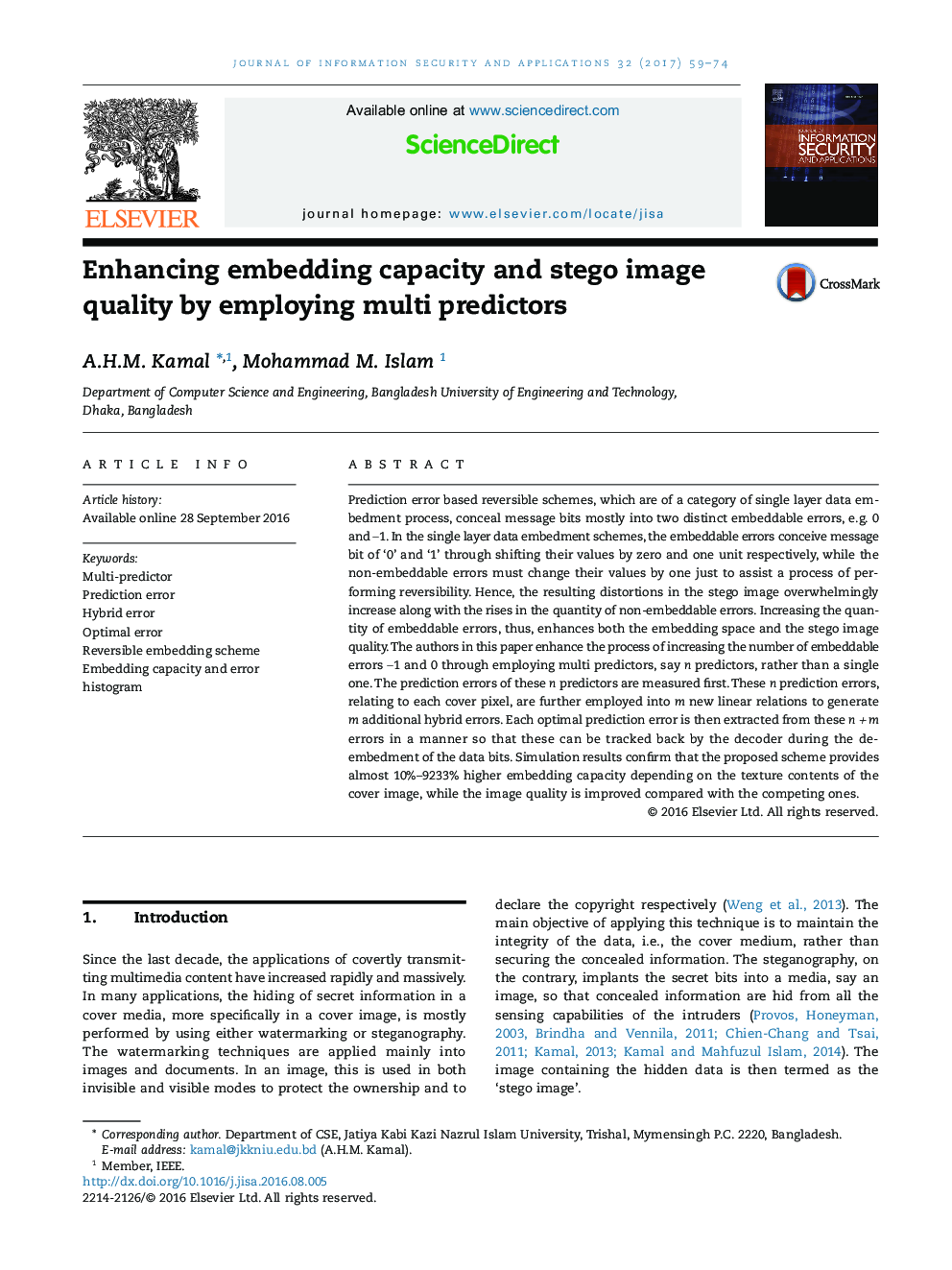| کد مقاله | کد نشریه | سال انتشار | مقاله انگلیسی | نسخه تمام متن |
|---|---|---|---|---|
| 4955767 | 1444325 | 2017 | 16 صفحه PDF | دانلود رایگان |
- The multi-predictor scheme generates most optimal prediction errors.
- The predictor improves the prediction accuracy and the embeddable errors' quantity.
- This scheme boosts up the embedding payloads and the stego image quality notably.
- The self-reliant decoder computes stego errors using multi-predictor scheme.
- The number of predictors and their applied sequences are unknown to third party.
Prediction error based reversible schemes, which are of a category of single layer data embedment process, conceal message bits mostly into two distinct embeddable errors, e.g. 0 and â1. In the single layer data embedment schemes, the embeddable errors conceive message bit of '0' and '1' through shifting their values by zero and one unit respectively, while the non-embeddable errors must change their values by one just to assist a process of performing reversibility. Hence, the resulting distortions in the stego image overwhelmingly increase along with the rises in the quantity of non-embeddable errors. Increasing the quantity of embeddable errors, thus, enhances both the embedding space and the stego image quality. The authors in this paper enhance the process of increasing the number of embeddable errors â1 and 0 through employing multi predictors, say n predictors, rather than a single one. The prediction errors of these n predictors are measured first. These n prediction errors, relating to each cover pixel, are further employed into m new linear relations to generate m additional hybrid errors. Each optimal prediction error is then extracted from these nâ+âm errors in a manner so that these can be tracked back by the decoder during the de-embedment of the data bits. Simulation results confirm that the proposed scheme provides almost 10%-9233% higher embedding capacity depending on the texture contents of the cover image, while the image quality is improved compared with the competing ones.
Journal: Journal of Information Security and Applications - Volume 32, February 2017, Pages 59-74
